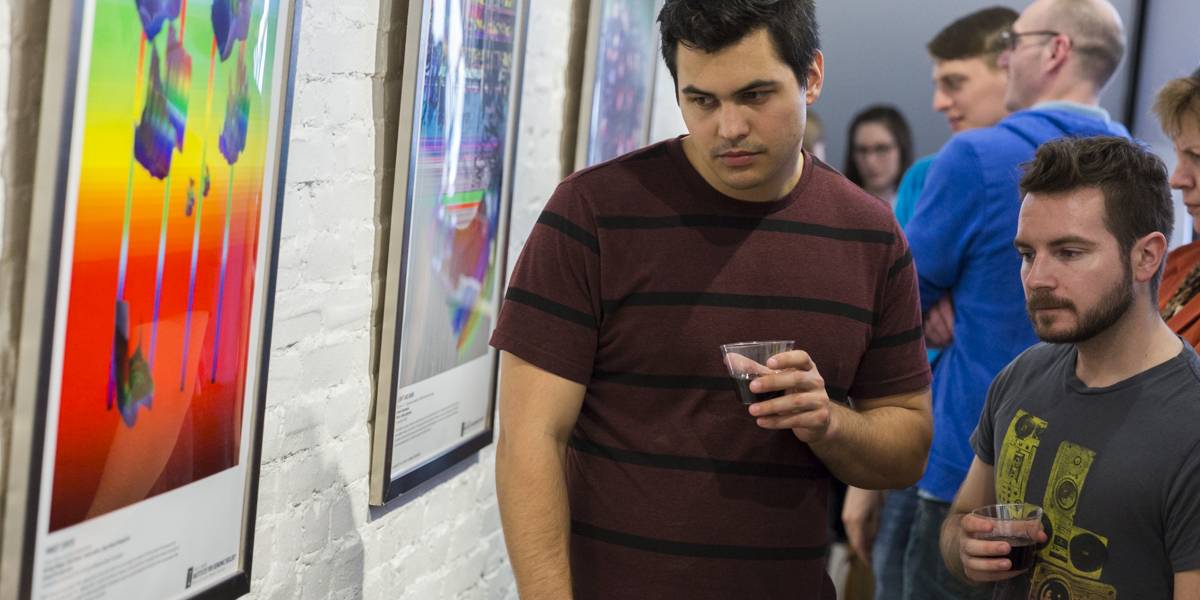On the evening of Thursday, April 28th, Gallery 217 opened it’s doors to let the downtown crowd experience science in a unique way that they likely never have seen before. Created by the Carl R. Woese Institute of Genomic Biology at the University of Illinois and brought to the community by Doug Nelson, President of BodyWork Associates, the exhibit brought displays of a variety of images that allowed visitors to experience scientific research in an up close and personal way.
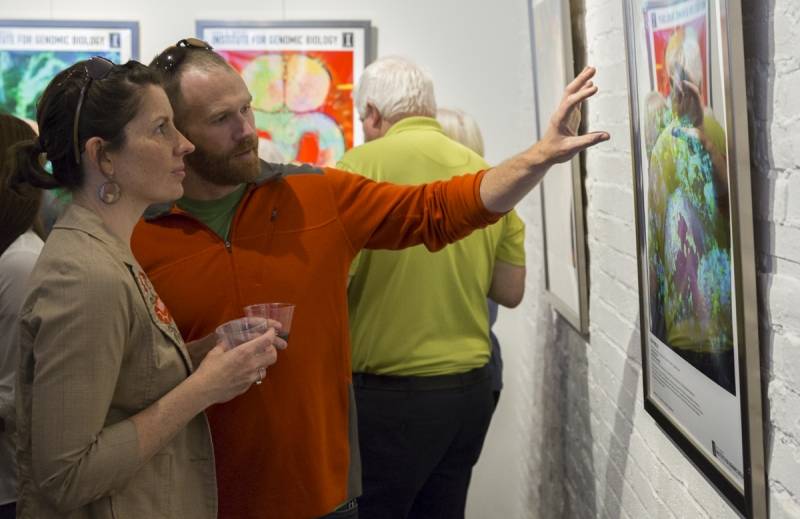
Microscopic scales from the bottom of a chicken’s foot, brain slices from a fish brain, muscle fibers from a rat larynx; all of these and more were on display. Captured via a variety of imaging techniques, these pictures of actual research were then artistically enhanced and refined to stand out as works of fine art- you’d likely never guess what you were looking at if not for the descriptions accompanying each piece. And this was largely the point of the show- bringing scientists, artists, and every day people together in a way that they could connect more deeply and better relate to our fascinating world.
Below, Doug Nelson, President of BodyWork Associates, welcomes the crowd.
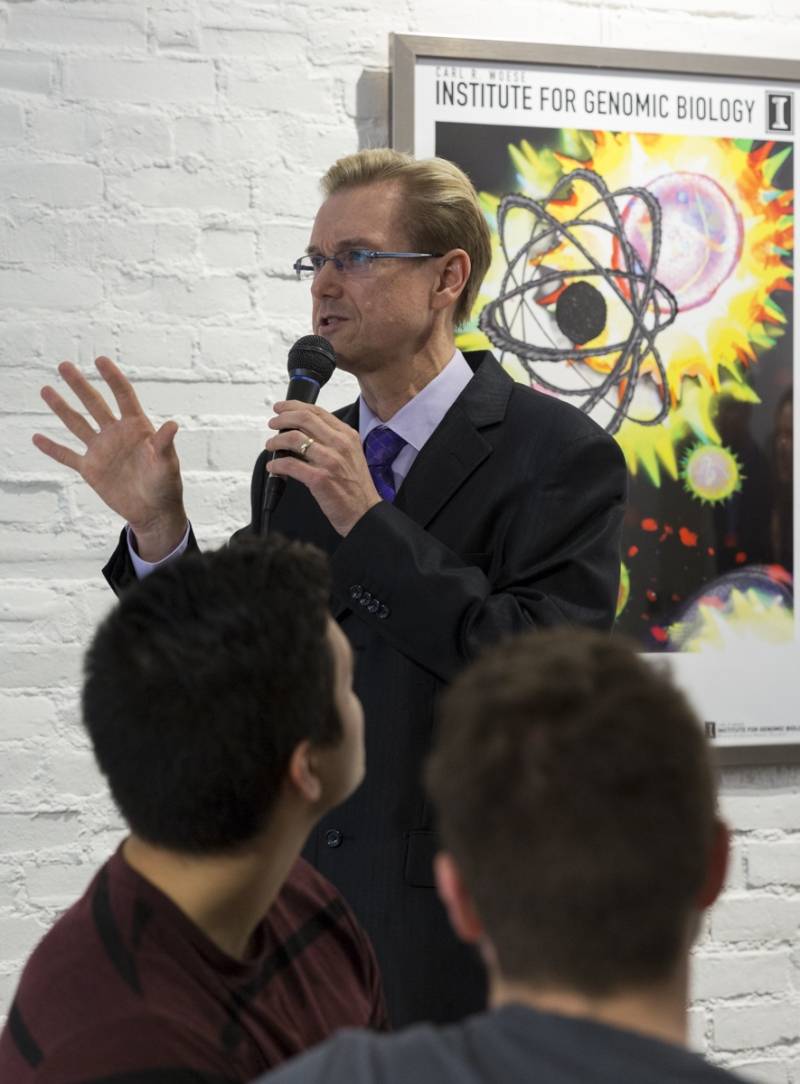
The opening reception was very well-attended, packing both levels of the gallery as members of the University and general community mingled with a mix of smiles, laughs, and (of course) some seriously scientific conversation. And, while she show is now over, you can definitely look forward to version 7.0 next year! For more photos of opening night, check below.

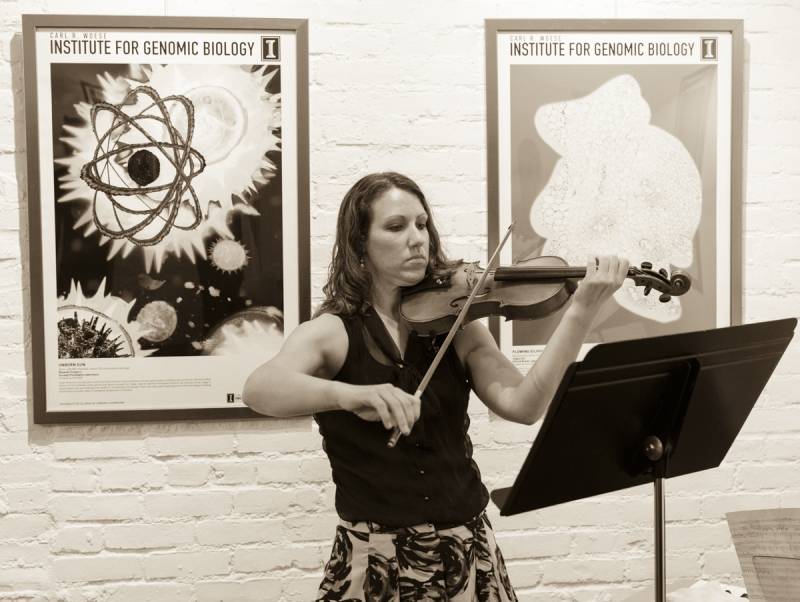
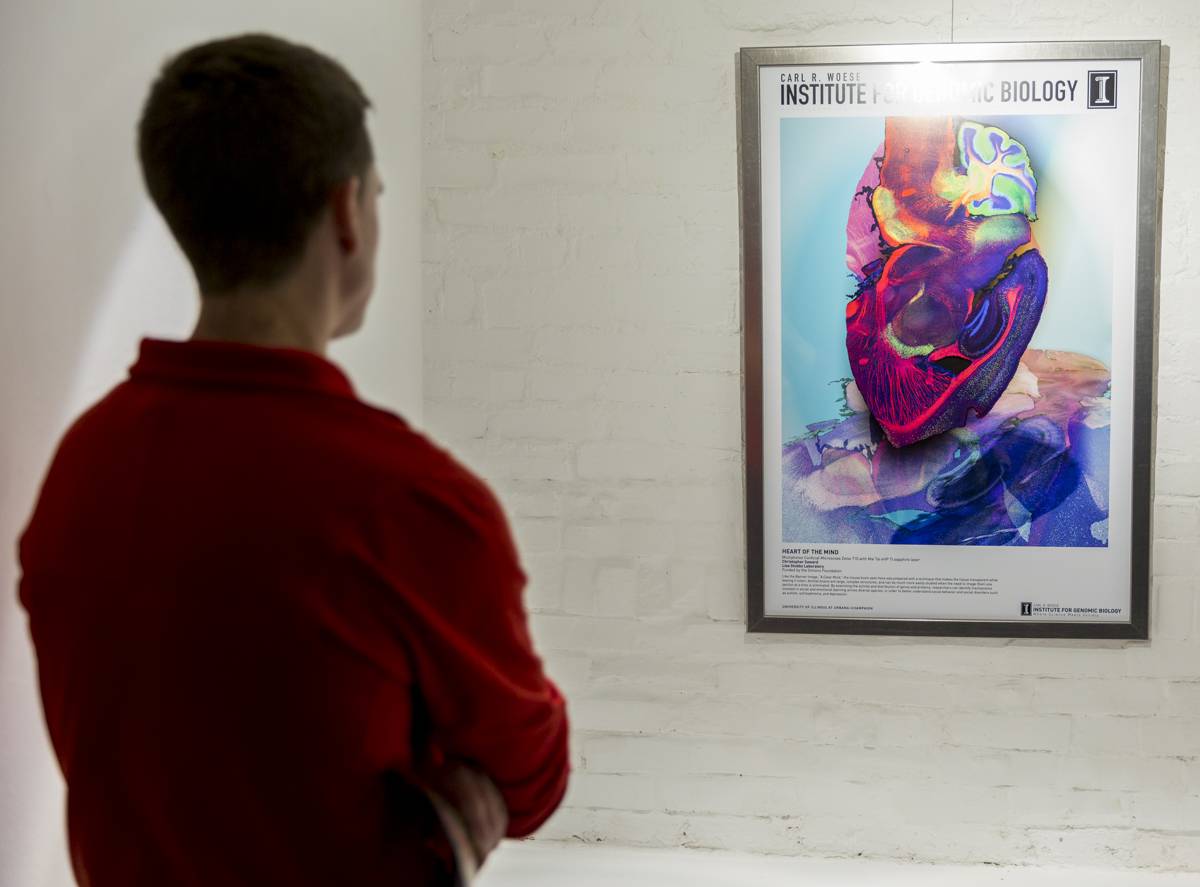
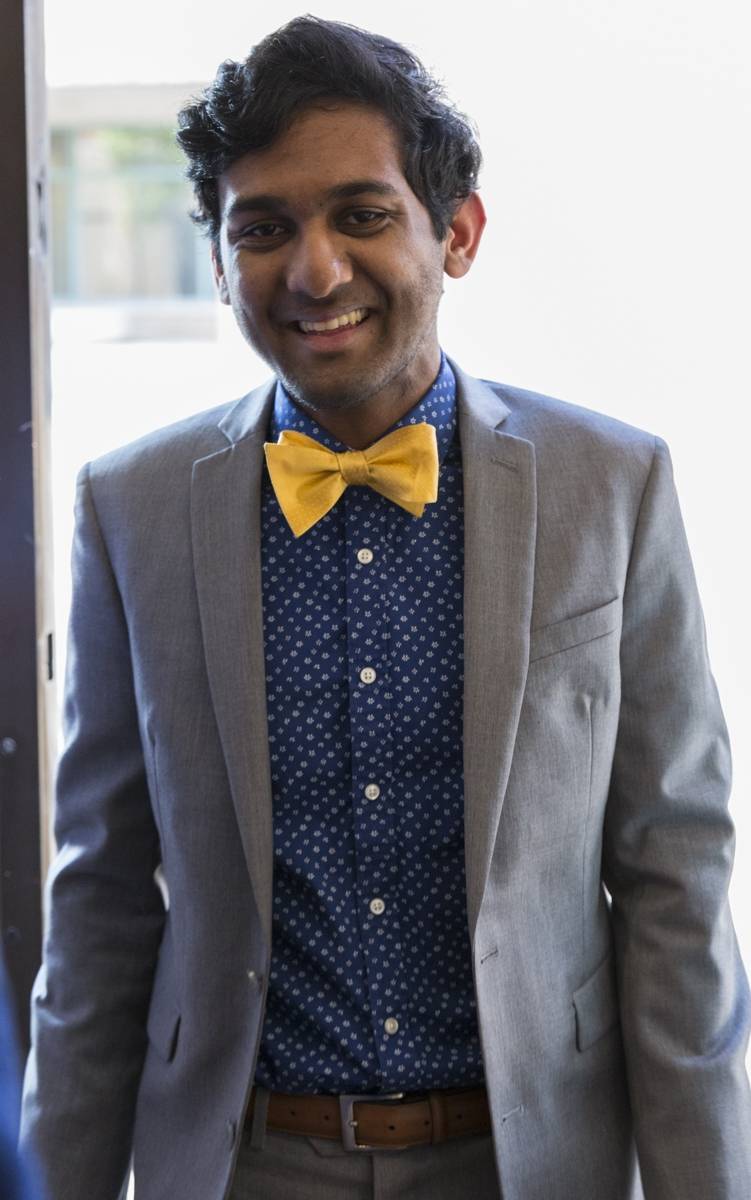
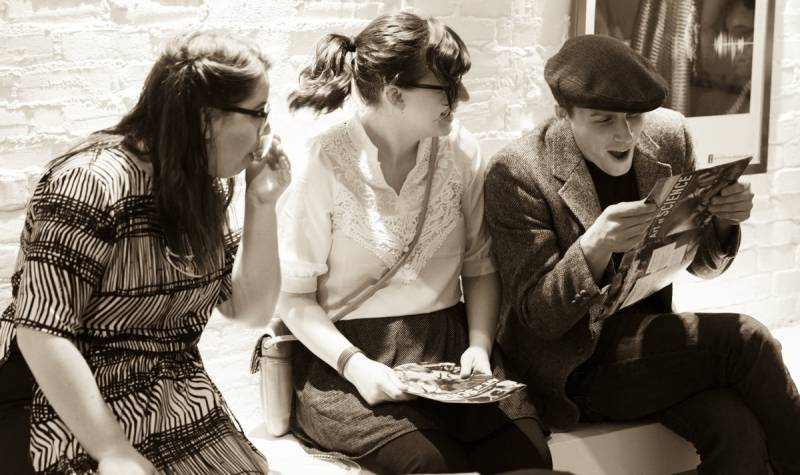
Below, “The Mind that Knows Itself” by Noëlle James, shows a slice of stickleback fish brain.
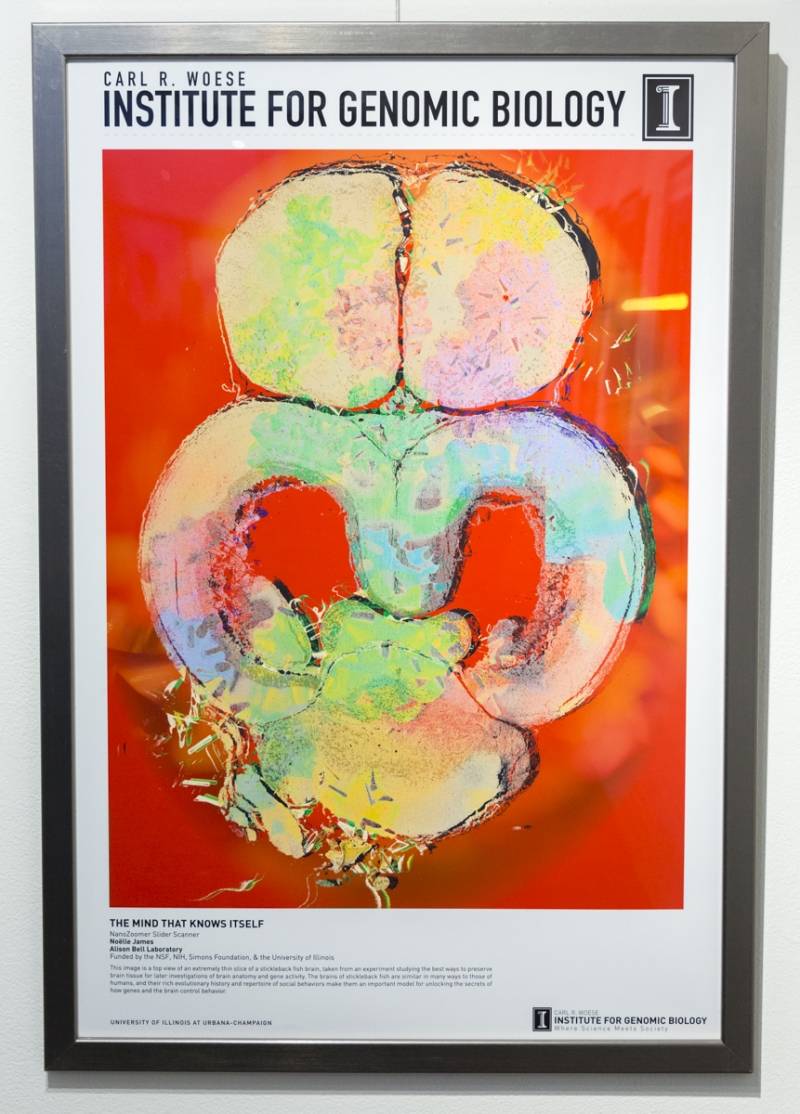
Below, Gene Robinson, Director of the Carl R. Woese Institute of Genomic Biology, offers thanks to the multitude of people who’s effort went into creating this year’s show.
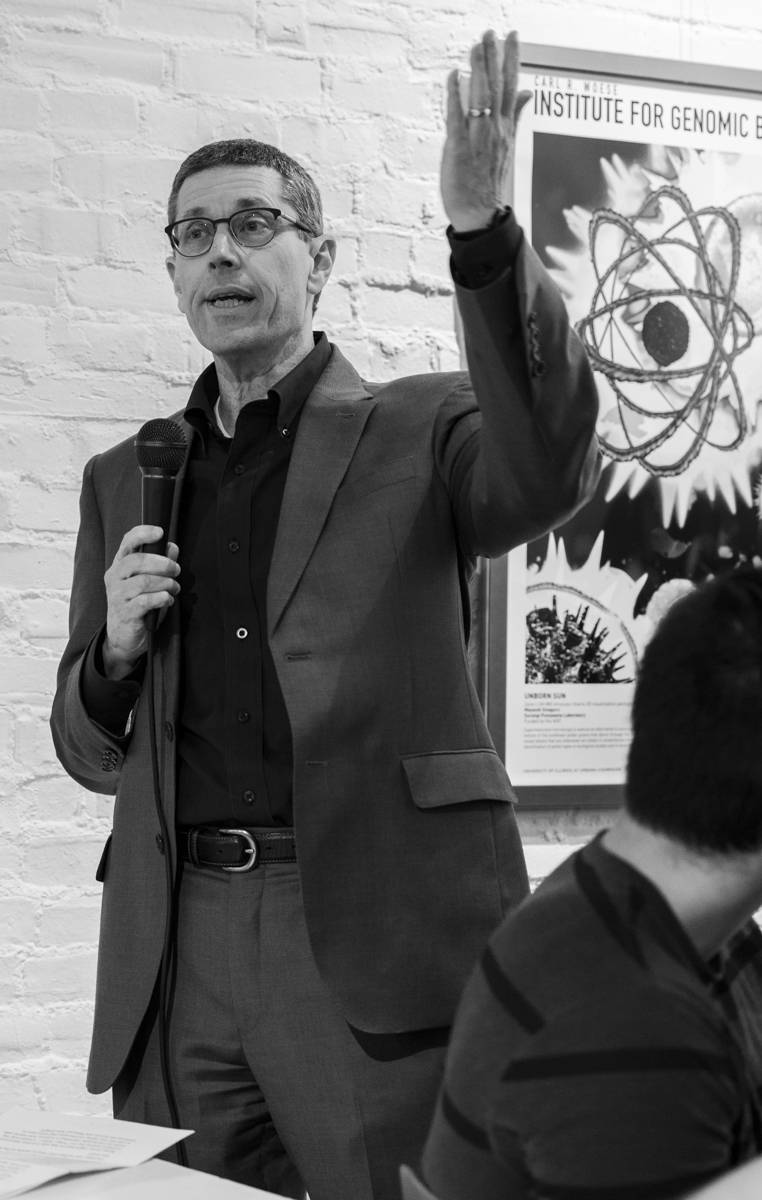
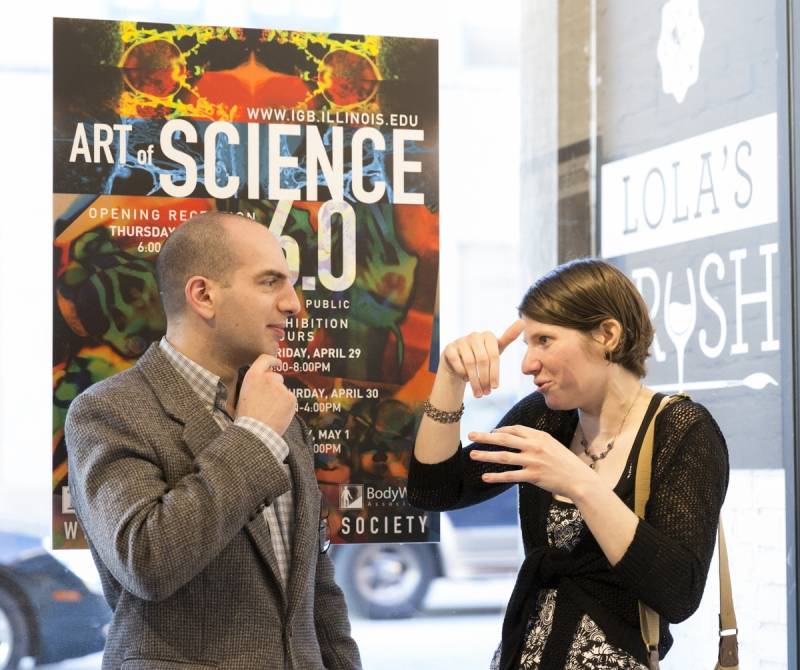
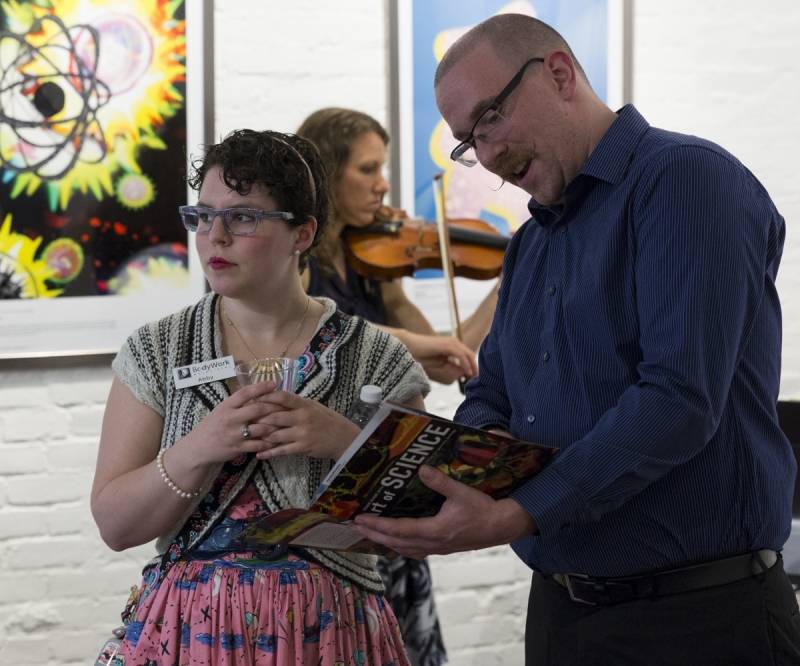
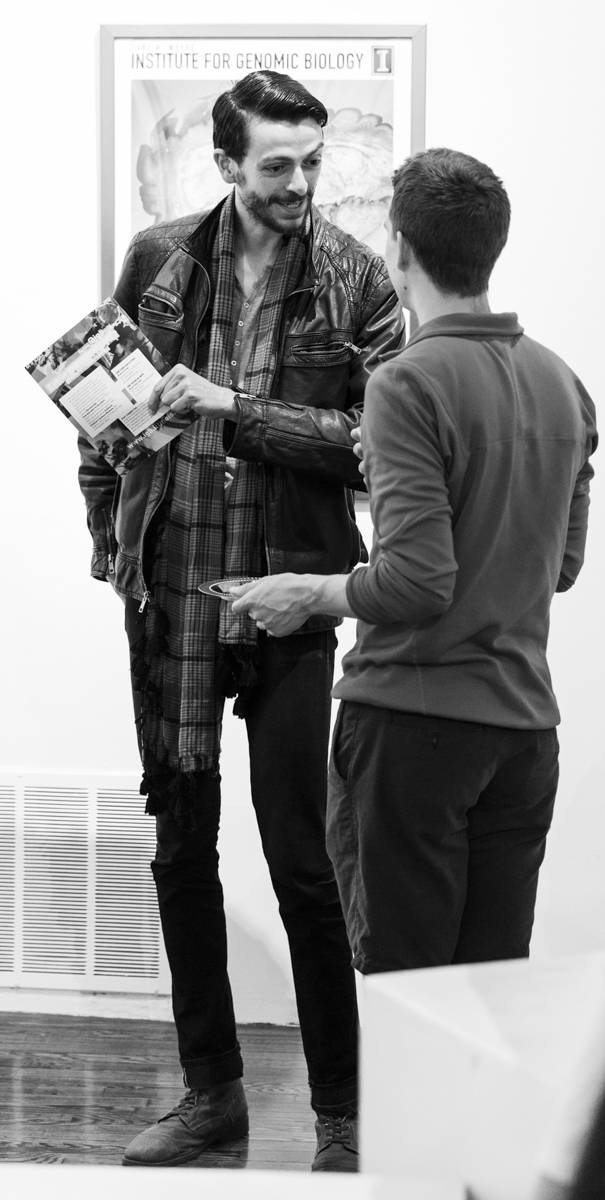
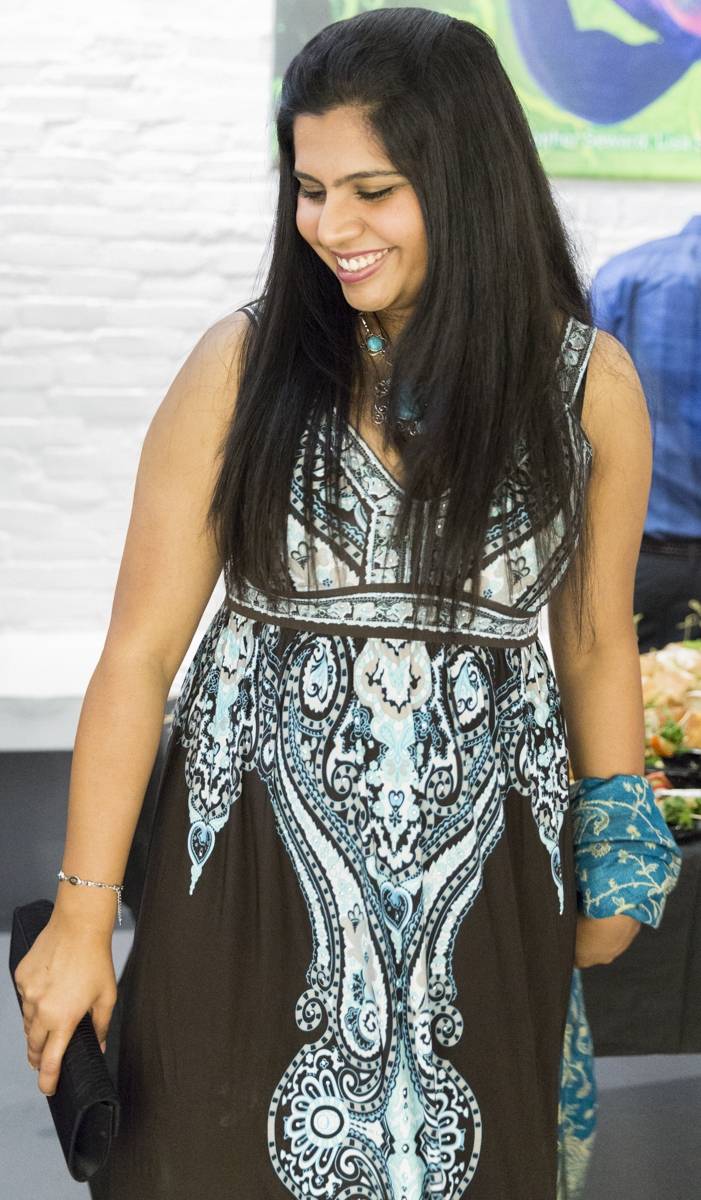
Below, “Walking on a Cloud” by Juxing Chen shows scales from the bottom of a chicken’s foot.
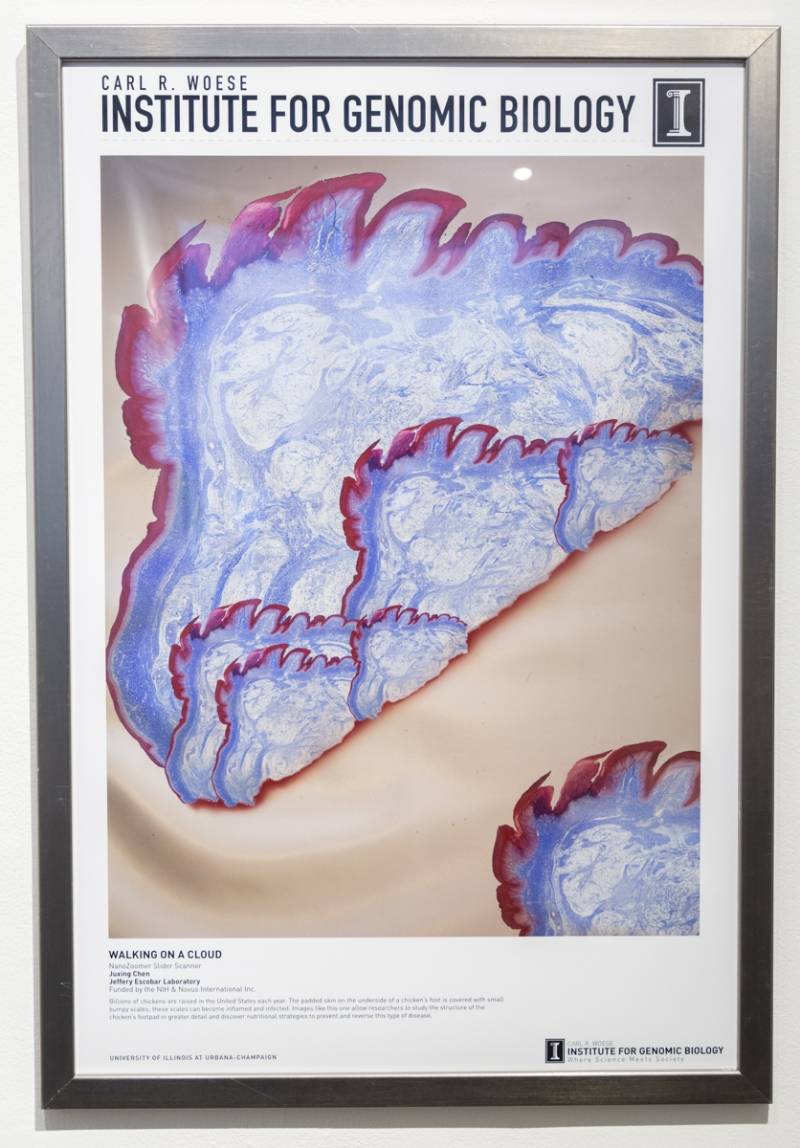
Below, Amy Marshall-Colon (left) discusses her work on display.
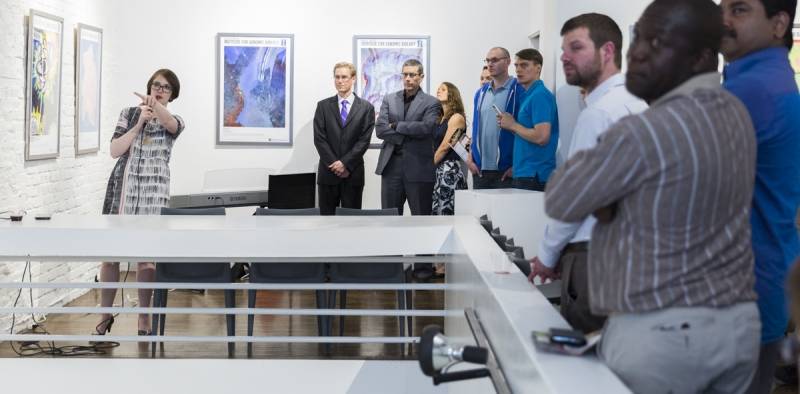
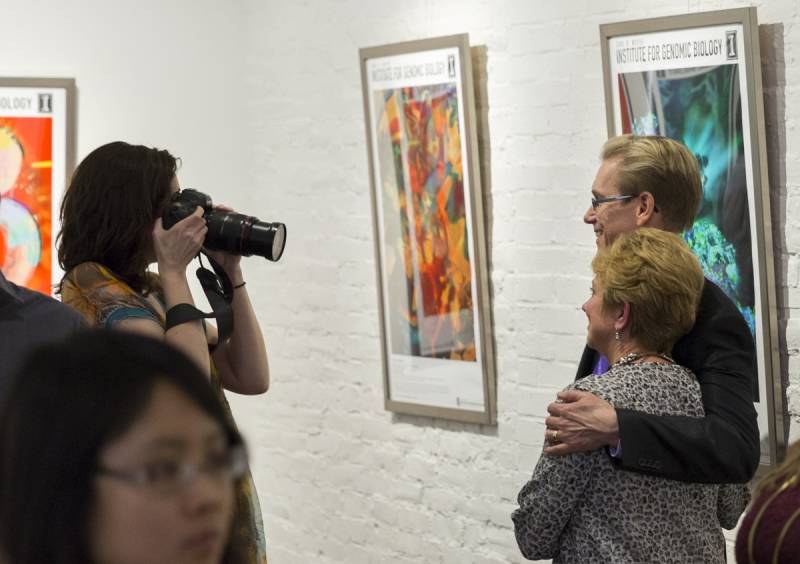
Below, Christopher Seward stands next to his wall-sized print of “A Clear Mind”, which shows the inside of a mouse brain.

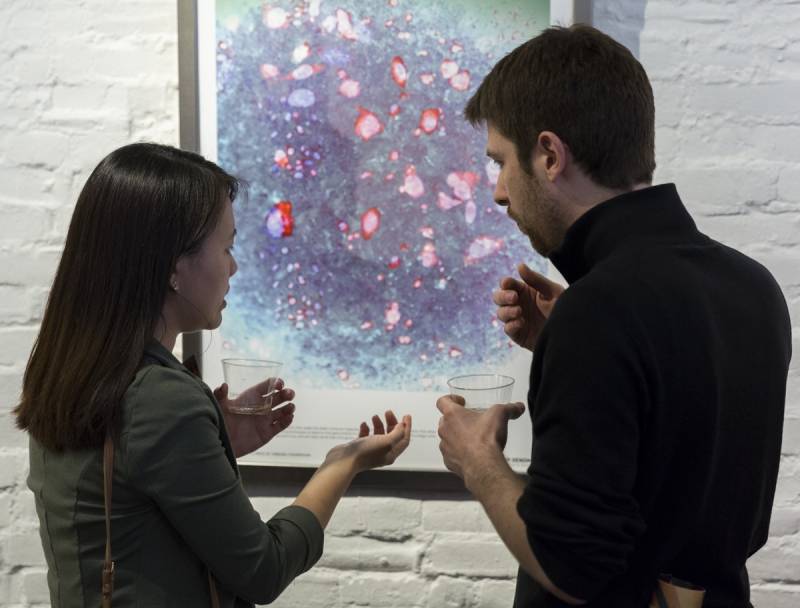

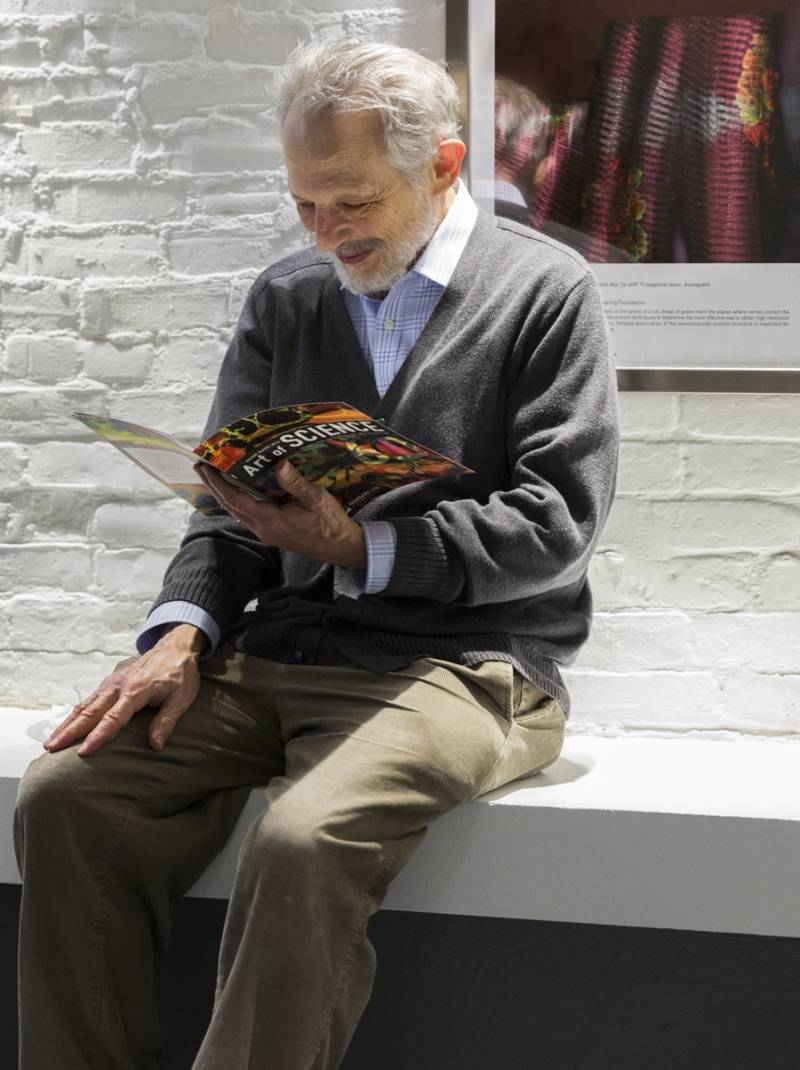
About the author: Stephen N. Kemp
Stephen is an IT manager for the University of Illinois and has been a photographer for Smile Politely since 2015. Find his photography on Facebook or contact him directly via email.








